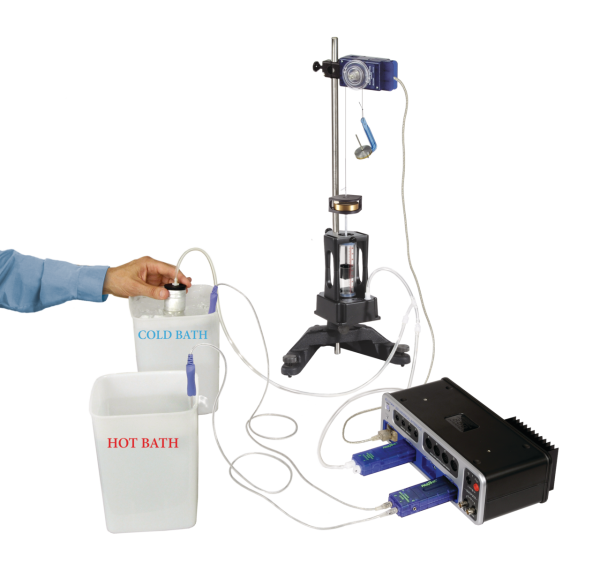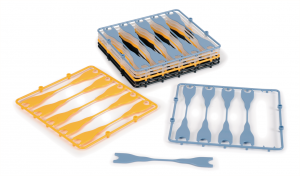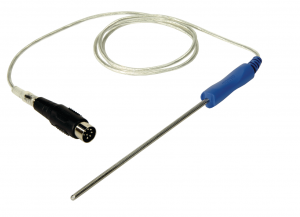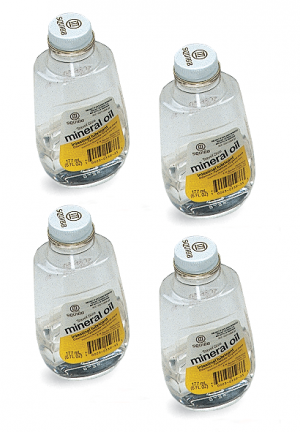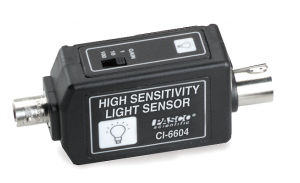Product Details
Heat Engine Cycles Experiment
$0.00
The complete solution for examining the efficiency of heat engines and compared to the ideal gas law.
Description
A P-V diagram is generated as a heat engine is taken through a cycle. From this diagram, the heat added to the gas and the work done by the engine are measured to determine the efficiency of the engine. This actual efficiency is compared to the theoretical maximum efficiency.
The heat engine consists of air inside a cylinder that expands when an attached can is immersed in hot water. The expanding air pushes on a piston and does work by lifting a weight. The heat engine cycle is completed by immersing the can in cold water, which returns the air pressure and volume to the starting values.
The cycle is performed as follows:
- With the can in the cold bath, the 200 g mass is placed on the platform.
- The can is moved from the cold bath to the hot bath.
- The 200 g mass is removed from the platform.
- The can is moved from the hot bath to the cold bath.
The change in pressure is measured with a Low Pressure Sensor. The change in piston height is measured by the attached string over the Rotary Motion Sensor pulley. The change in volume is calculated by multiplying the change in piston height by the piston cross-sectional area.
PASCO Advantage: This operating heat engine shows how a difference in temperature can be used to do work. Each part of the cycle is easily identifiable, and the actual efficiency as well as the maximum possible efficiency can be easily determined.
https://www.pasco.com/products/complete-experiments/thermodynamics/ex-5530#specs-panel

